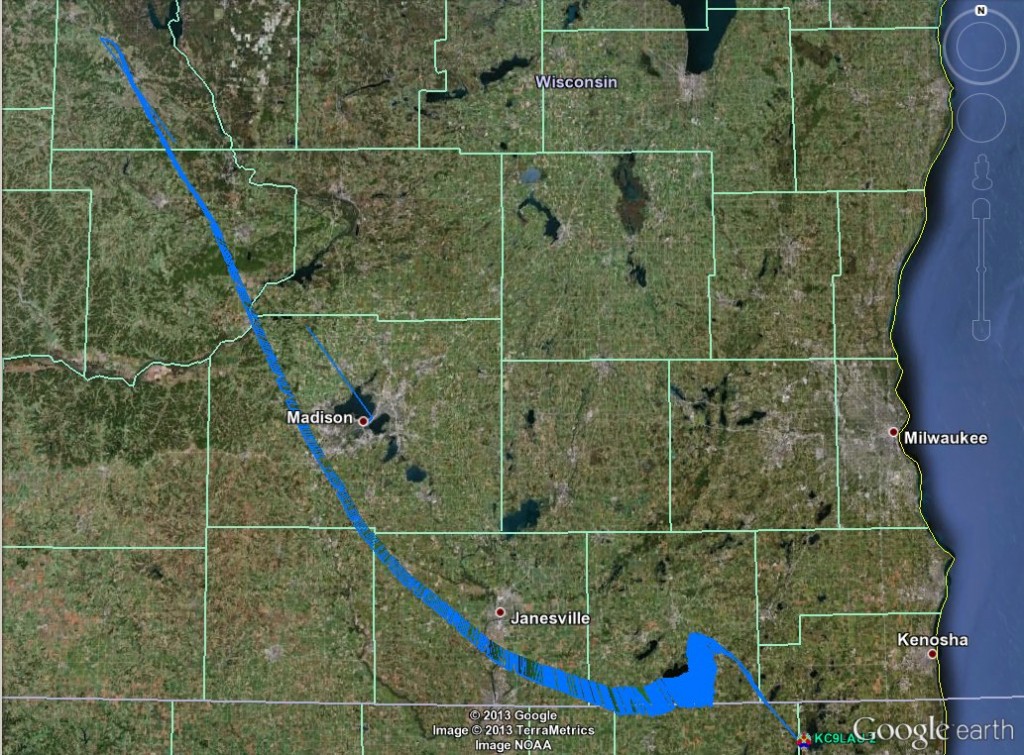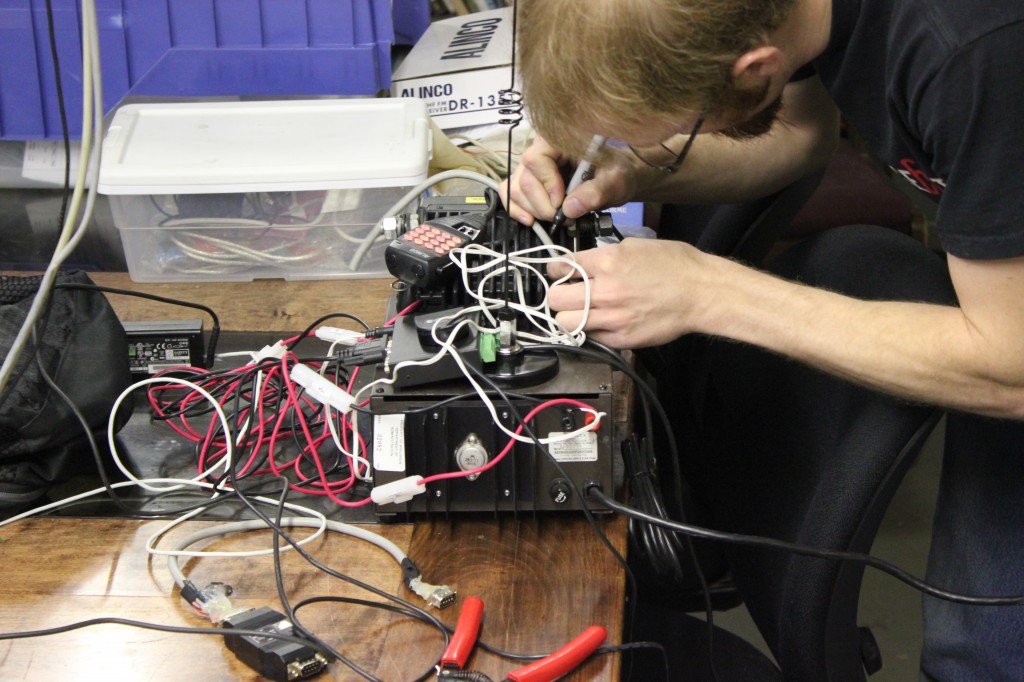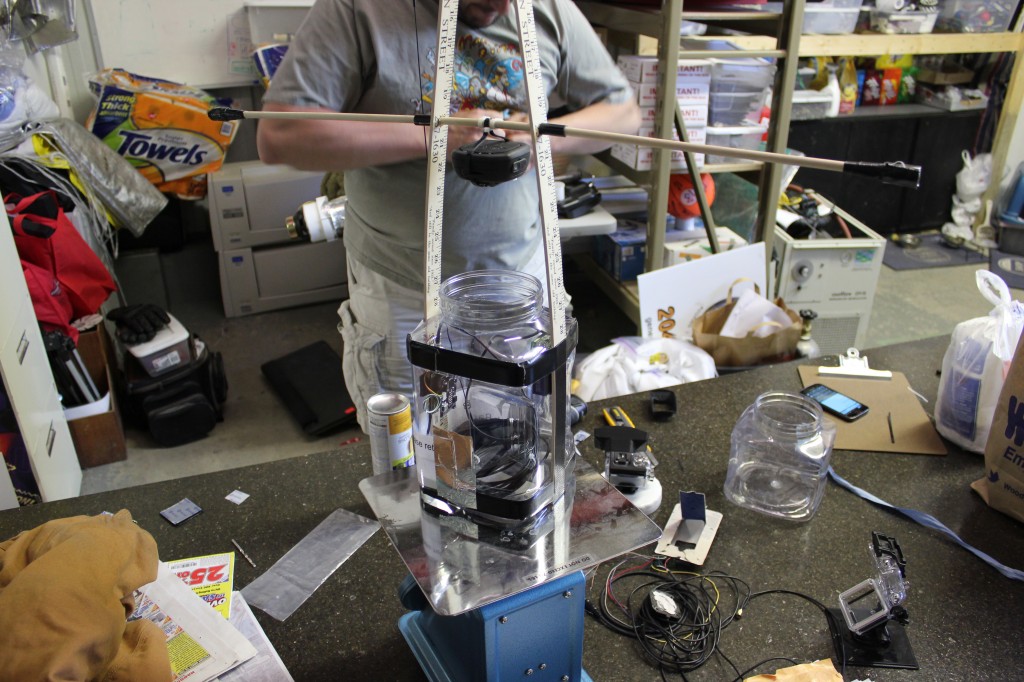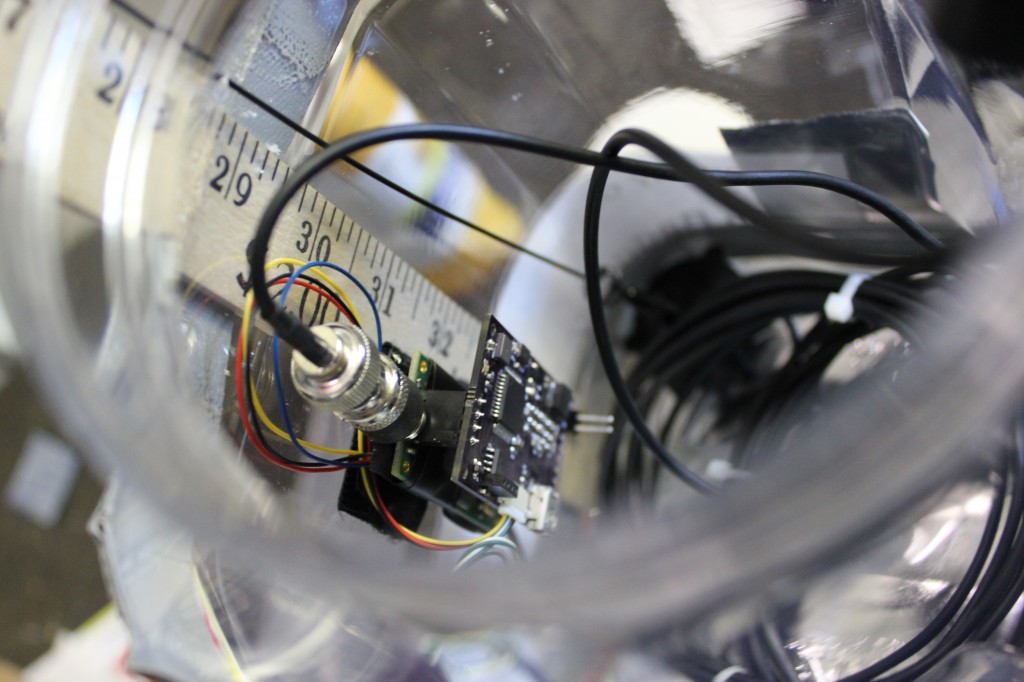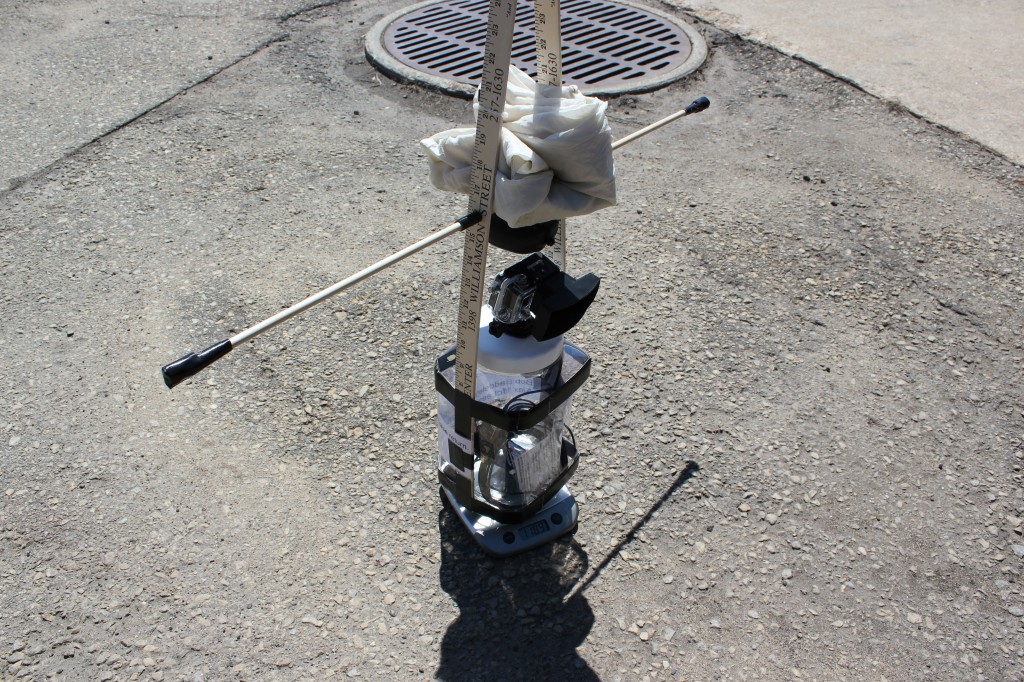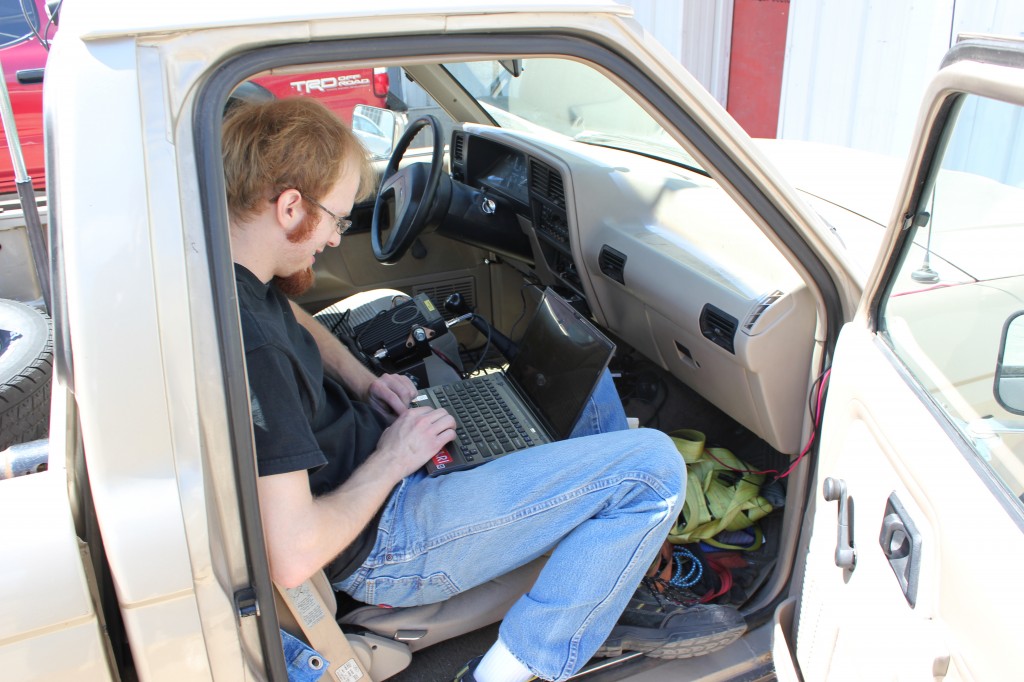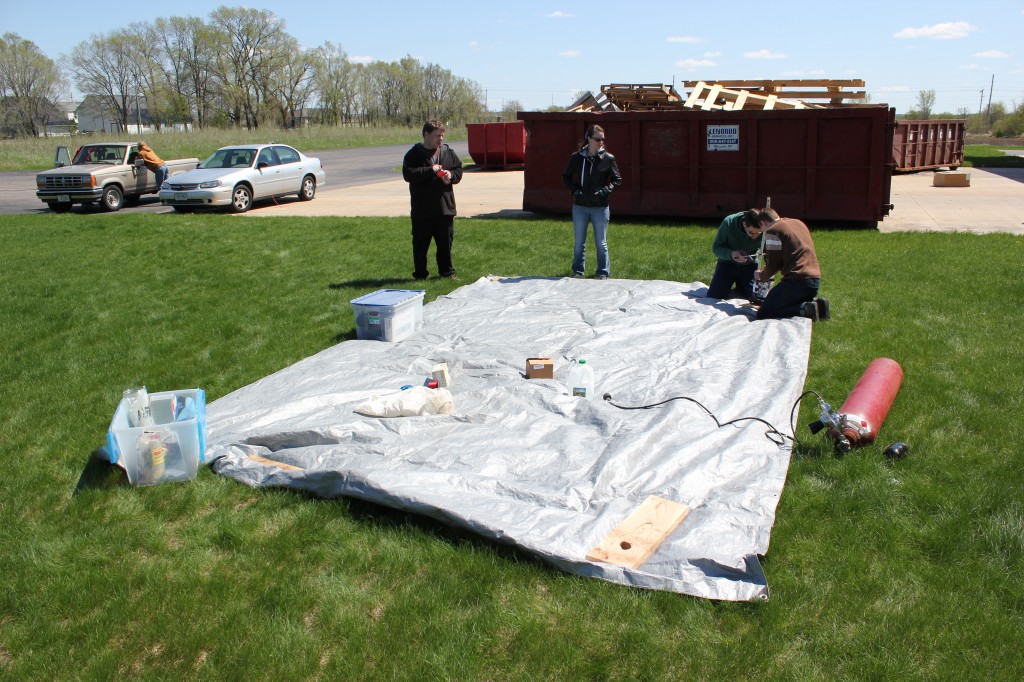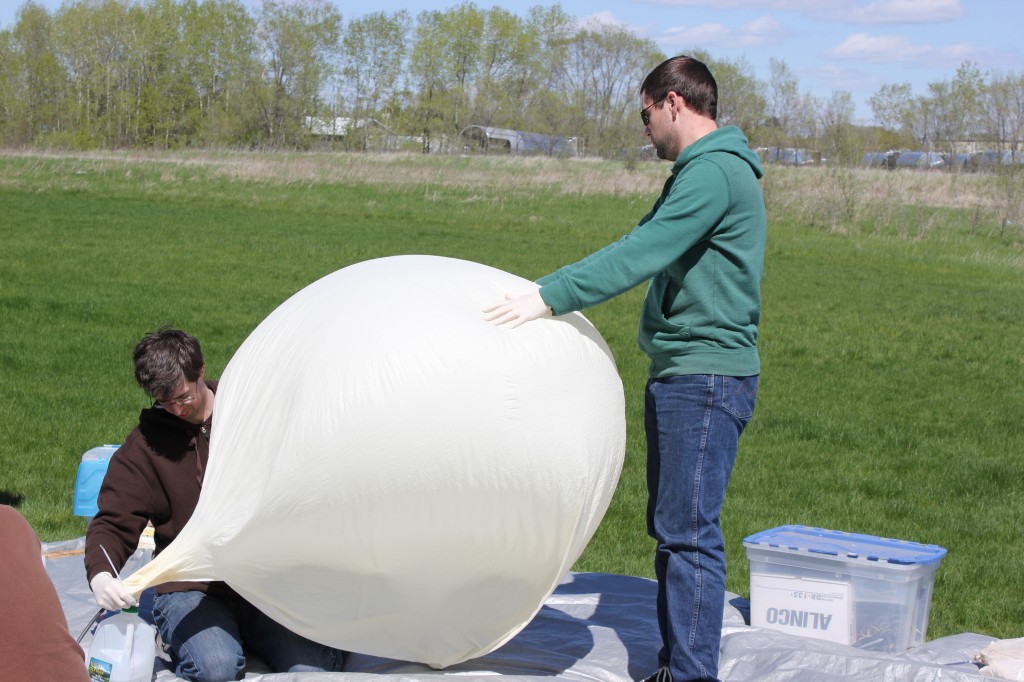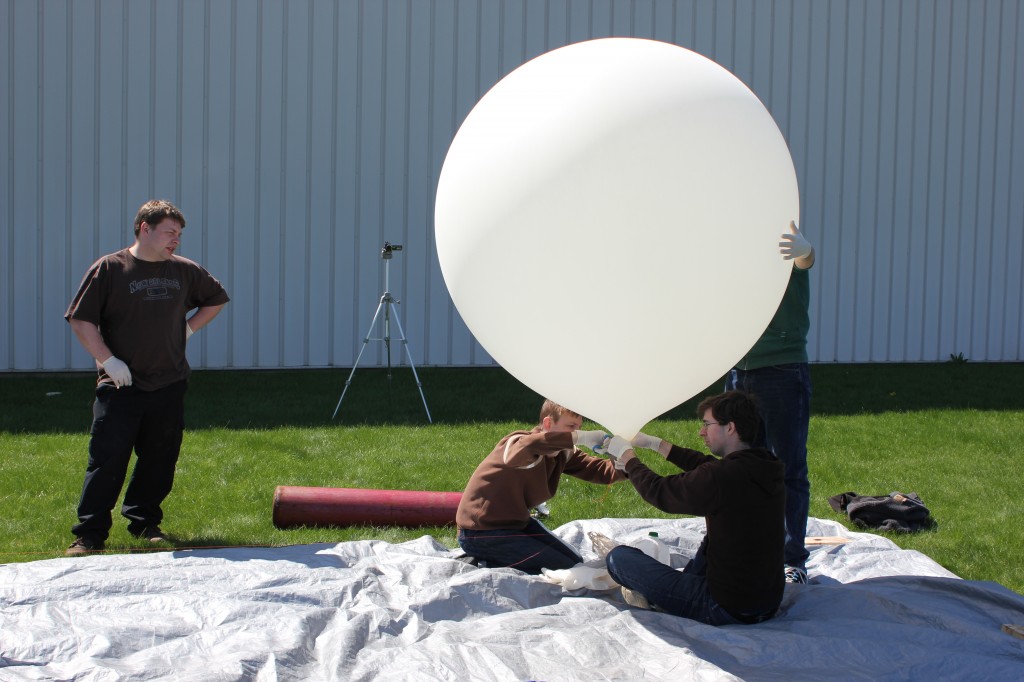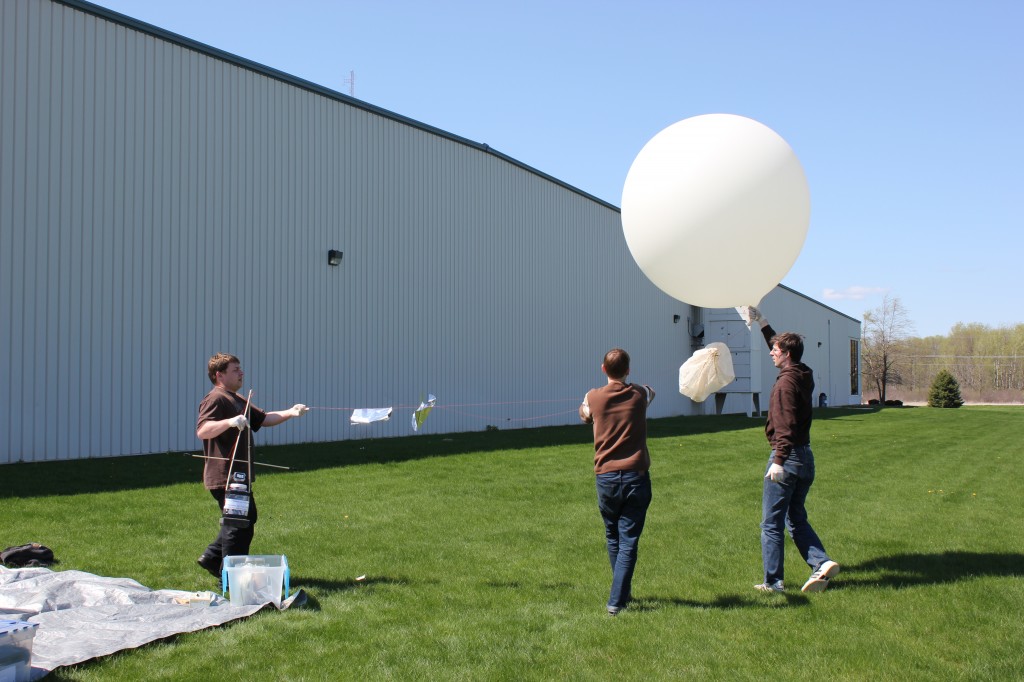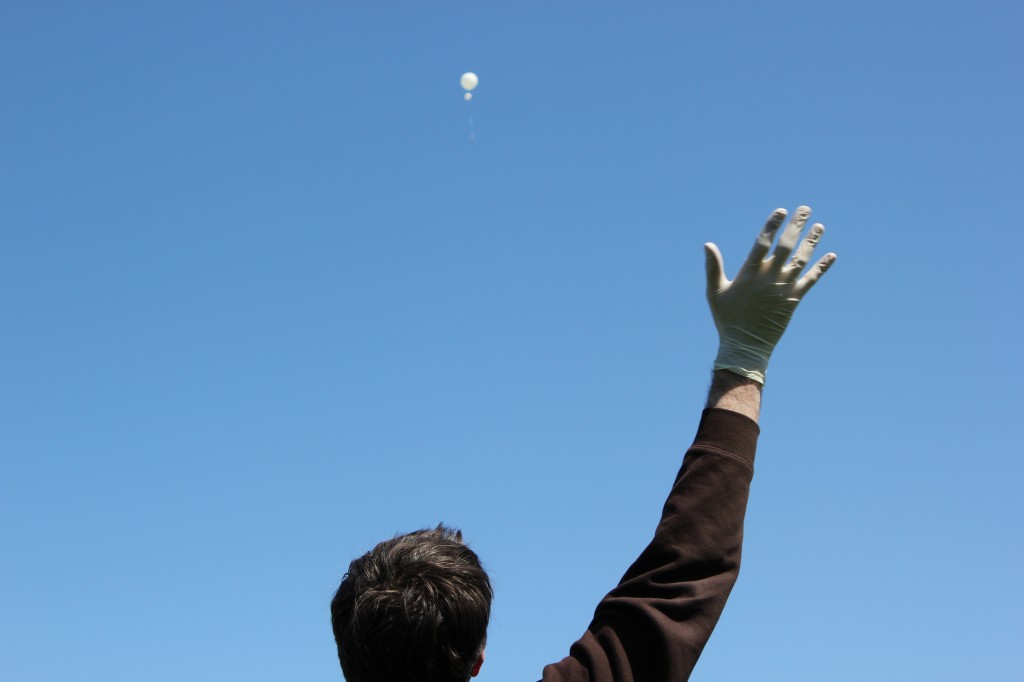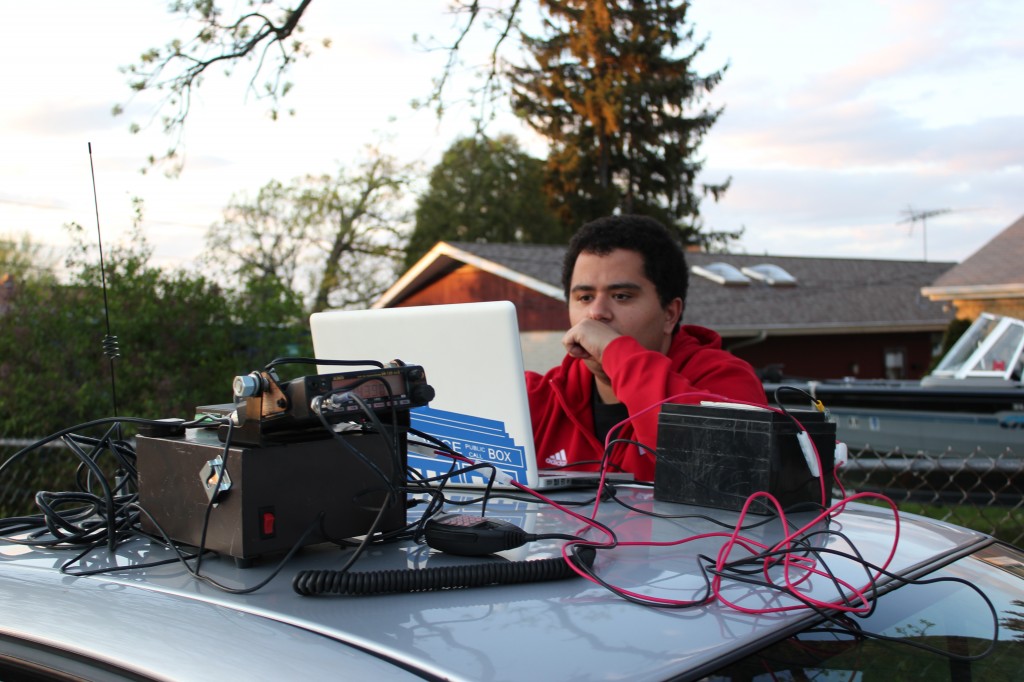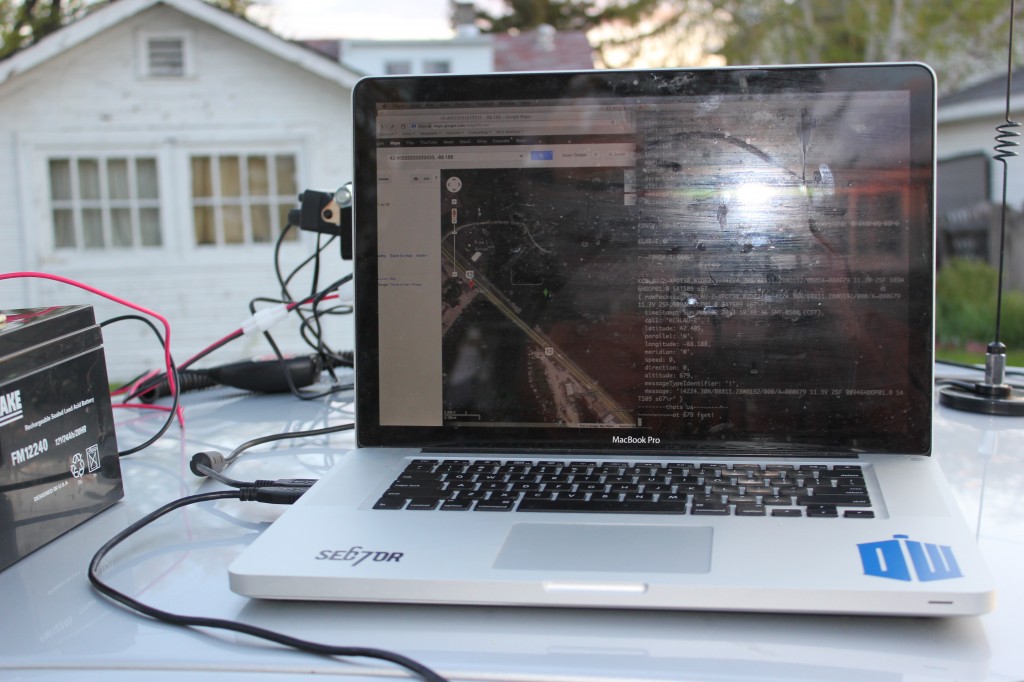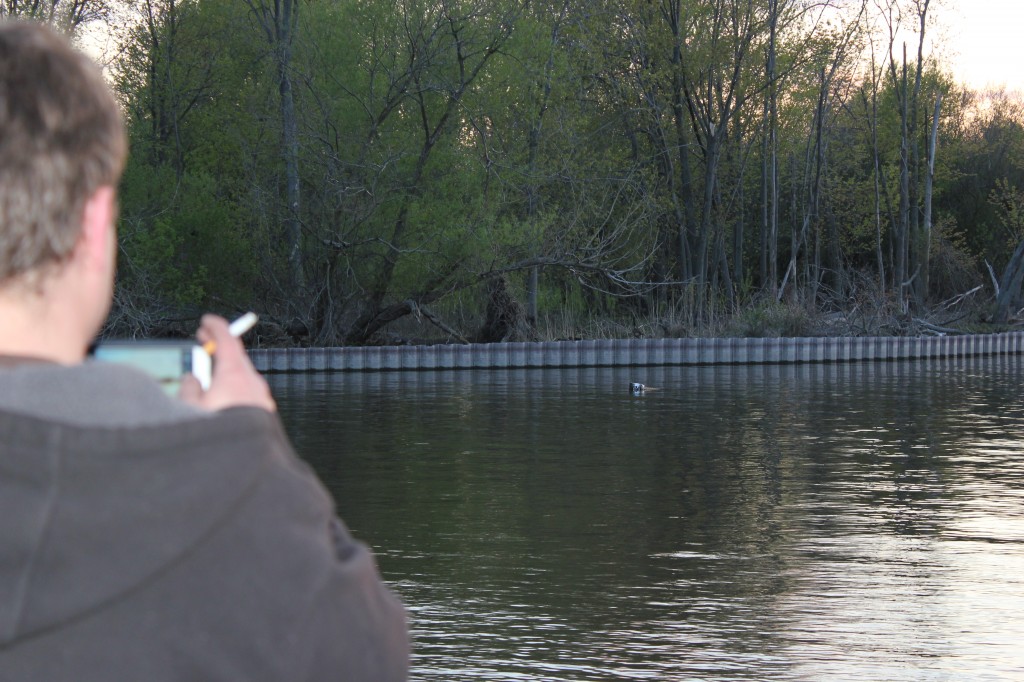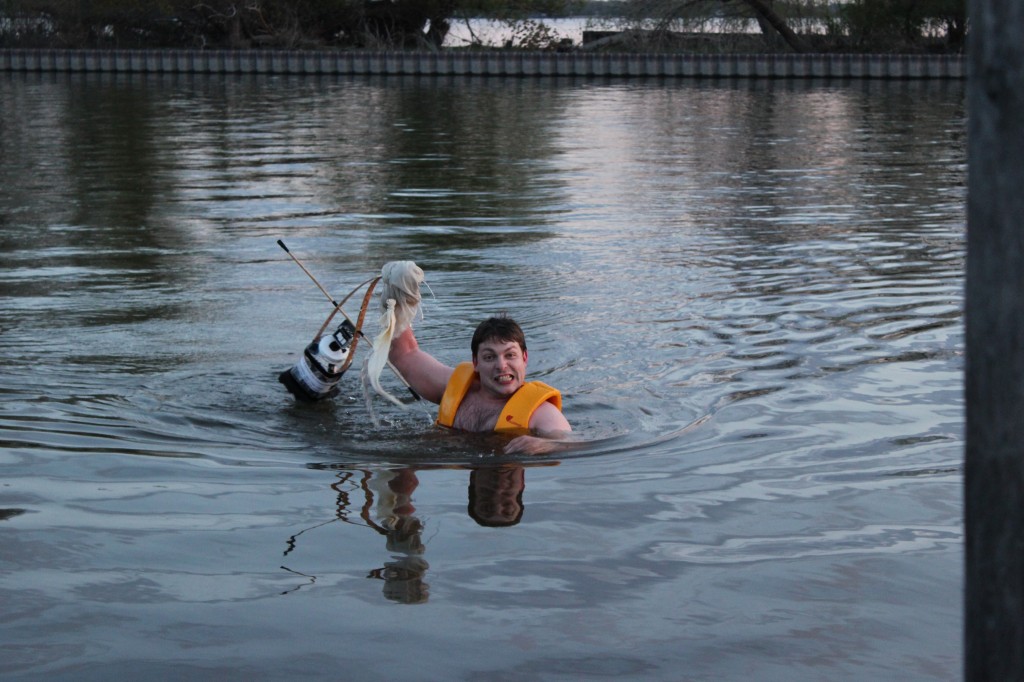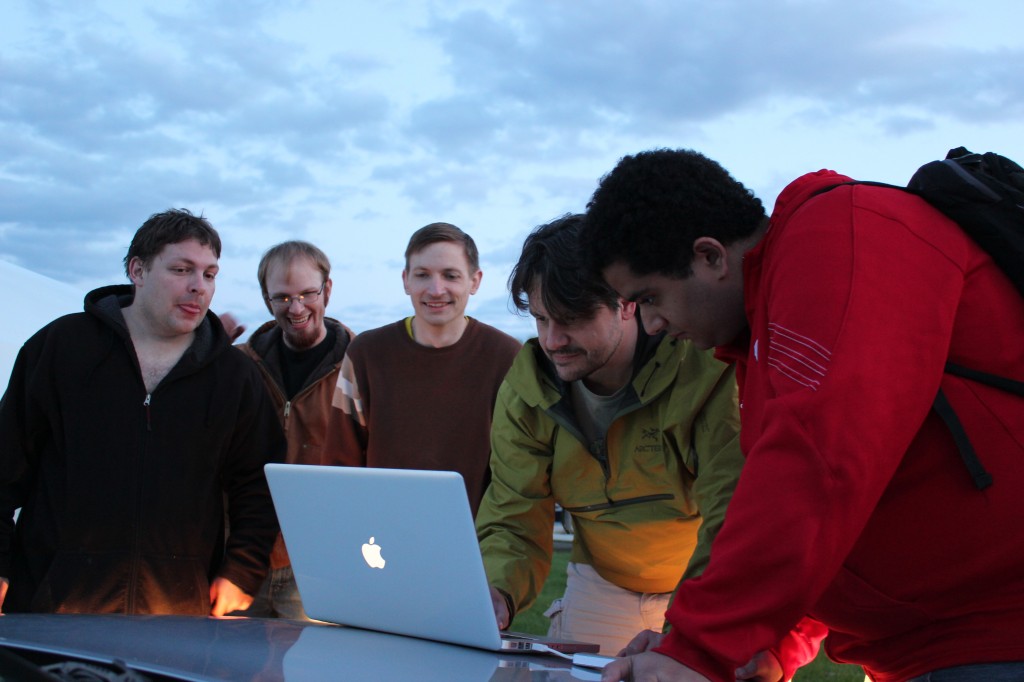On May 12, as part of a going-away celebration for our departing Apollo67 team member, we launched yet another balloon. He is now on the other side of the world in Australia, and we are currently drawing up plans to deliver a payload to him via high altitude balloon. We think crossing the equator and a couple oceans may be challenging.
During this launch, we nailed our telemetry. We had enough radio equipment to guarantee that we were going to track this thing. We had an APRS beacon blasting FAR more frequently than it should have been, and a good GPS chip, and decent antennas. We also had an IR blaster attached to a 9V battery so that after landing it would be easily visible with night vision goggles at night (most of our recoveries run into the evening/night). On the ground, though, is where we had the real powerful stuff. We had a radio with an antenna on a mast so that after the landing we would still be able to track it (once the radio goes below a certain altitude, the likelihood of an APRS receiver capturing signals is low, so it becomes difficult to track the final GPS coordinate of the balloon). A laptop parsed the radio signals and was able to lead us directly to the final location of the payload. This turned out to be a good thing.
It turned out that our flight path took us almost directly over Madison. If it had gone straight over we might not have captured photos of it, but this path gave us some great results.
There were bets on whether it would land in Wisconsin or Illinois. It just barely made it into Illinois.
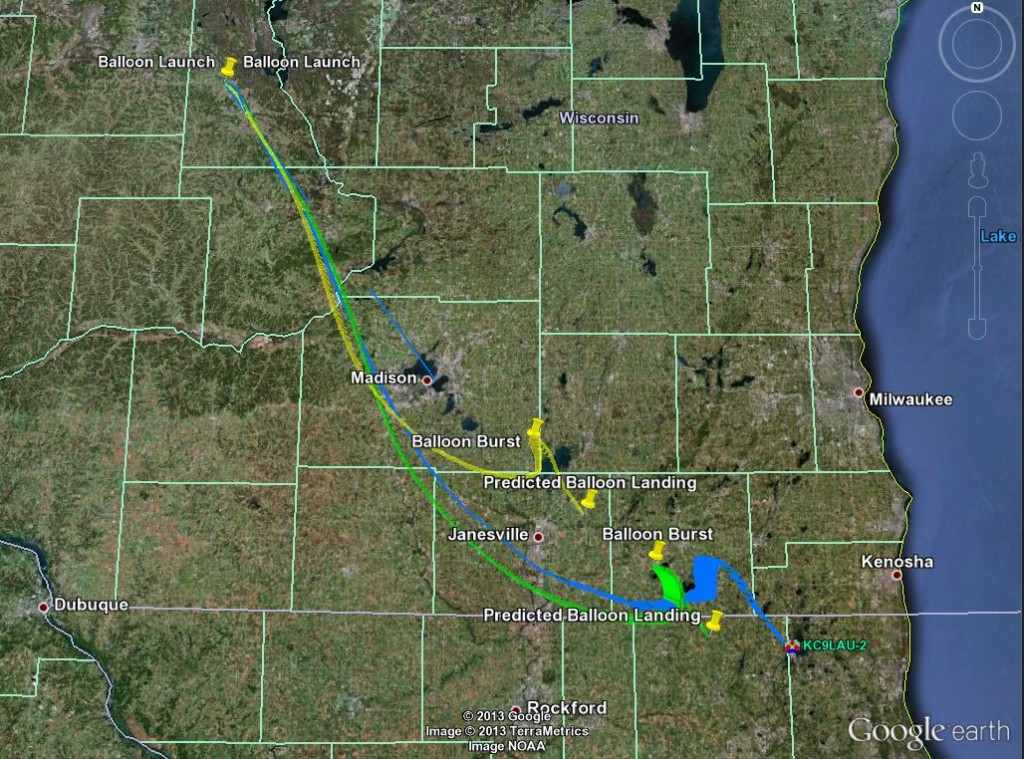
Original prediction (yellow), modified prediction (green), and actual (blue). Modified prediction was taken after calculating the actual ascent rate an hour into the trip. This gave us a much more accurate prediction.
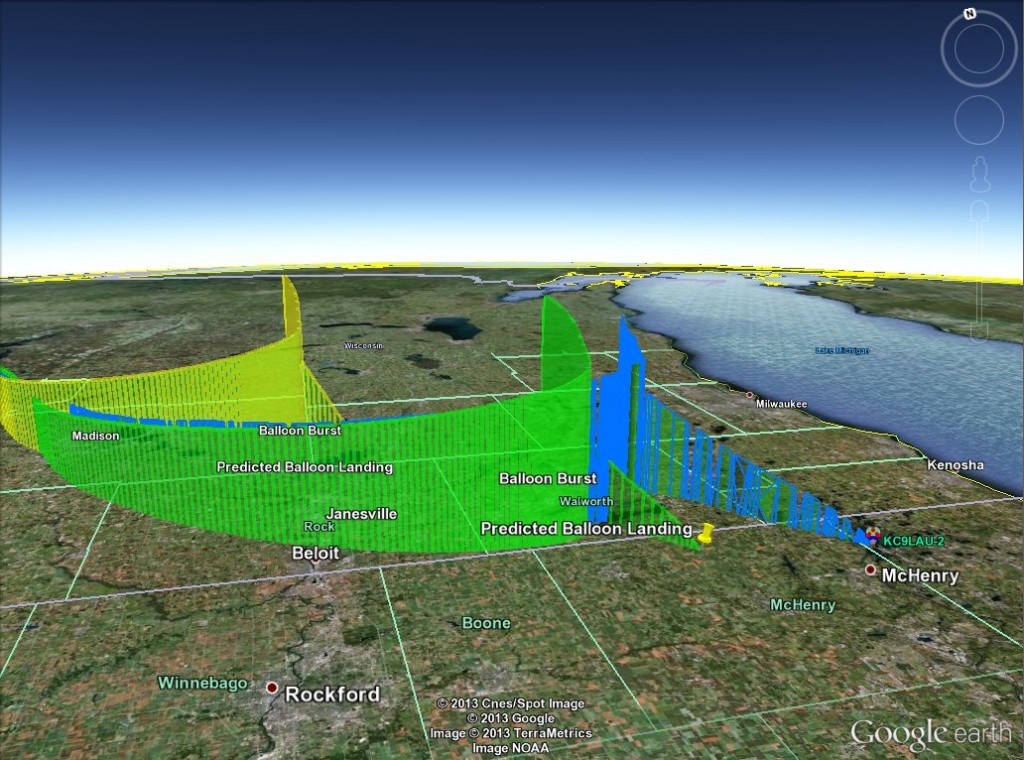
A horizontal view of the original predicted (yellow), the modified prediction (green), and the actual (blue).
This package didn’t use a custom foam enclosure; this time we went for waterproof and rugged, and it’s a good thing we did. This was a simple and effective enclosure.
- The full payload being measured to estimate how much to fill the balloon.

Nachos break! Before leaving, we took a break for nachos, leftovers from the Chris and Heather wedding reception the night before.

Watching the balloon travel back at Ops (Sector67). We knew it would be traveling by Madison, so we hurried back to Sector67 to regroup and change cars and people, then start chasing the balloon.



